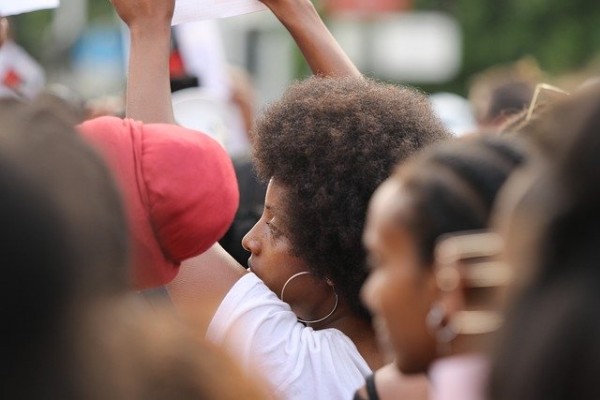Coronavirus: Is it Safe to Protest With All the Crowds?

Right now, in the United States, people continue to protest to stand up for George Floyd and his unfortunate fate. However, we must keep in mind that the coronavirus has not disappeared and that going to protests, where large crowds are present, is a huge health risk.
So is there a way to make our voices heard without putting our health at risk?
States have been reopening, but to avoid the transmission of the virus, most governments still advise to avoid large crowds. This includes protests that will not allow you to maintain a six-feet distance from each other.
IN CASE YOU MISSED IT: At Least 28,000 People Volunteered to Get Infected With Coronavirus for Research
"Testing everyone that participated in demonstrations would be useful in communities where many new cases are being reported every day," Ohio State University doctor Bill Miller suggested. "These new cases indicate that transmission is occurring at a high rate in the communities."
As an example, there might be a group of asymptomatic protesters who constantly move around and go about their activities. This could start a superspreader scenario, even if only one of them is not wearing a mask.
Will All the Loud Talking Spread the Coronavirus?
As we already know, the mere talking with an infected individual could cause the spread of the virus. In the case of rallies and protests, people will be shouting at the top of their lungs at very close proximity.
Exertion generates plenty of respiratory secretions. When one puts on an effort to yell, the person breathes more heavily, creating an increase in air exchange. As the breathing rate increases, there will also be a higher chance that an individual inhales droplets that contain the coronavirus.
READ MORE: Asphyxia Explained: The Scientific Perspective of George Floyd's Death
In a report, it has been estimated that an infected person will manage to contaminate two and six susceptible individuals.
A superspreader situation happened recently in Skagit County, Washington. The incident involved an asymptomatic choir member who attended a rehearsal, as reported by the Centers for Disease Control and Prevention.
The choir members took plenty of precautionary measures, which included "no hugging or shaking hands." Still, unfortunately, 52 of the 61 members of the choral group managed to get infected by the coronavirus. What's also troubling is that the choir members only gathered for not less than three hours.
How Should You Wear a Mask?
First thing's first, make sure that you use a mask that will properly fit the contour of your face--one that is snug enough and is securely attached at all times. When it comes to cloth masks, be sure that it is made of not just one layer of fabric. For the most part, check if there will be no breathing restrictions at your end while you're wearing the mask.
ALSO READ: Extracted Antibodies for COVID-19 Treatment: Phase 1 of Human Trials Begin
Jun 08, 2020 08:00 AM EDT





